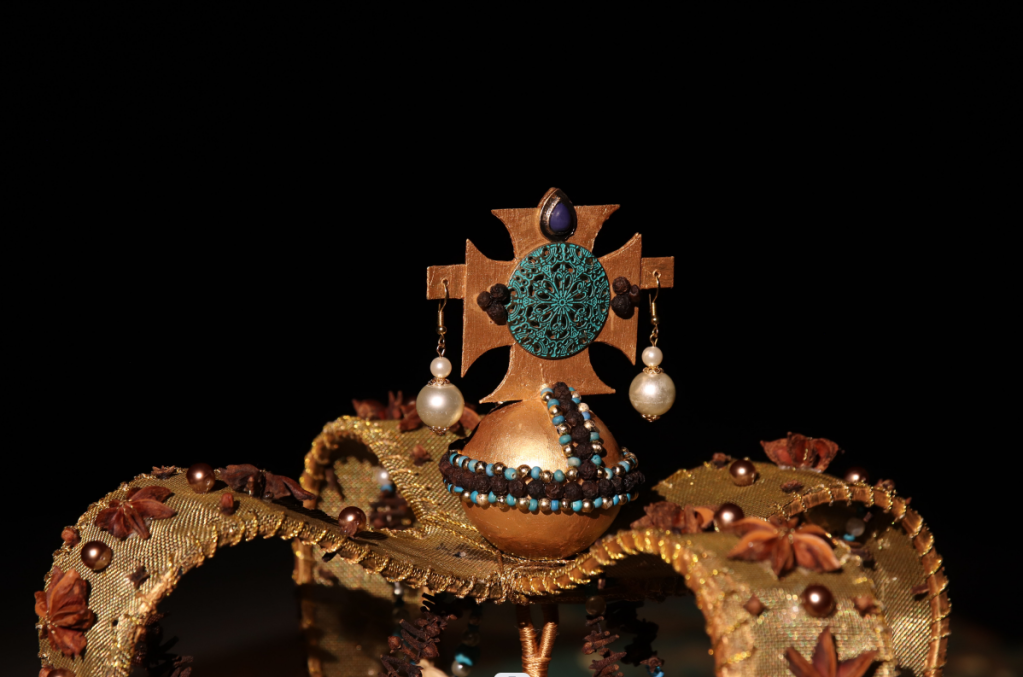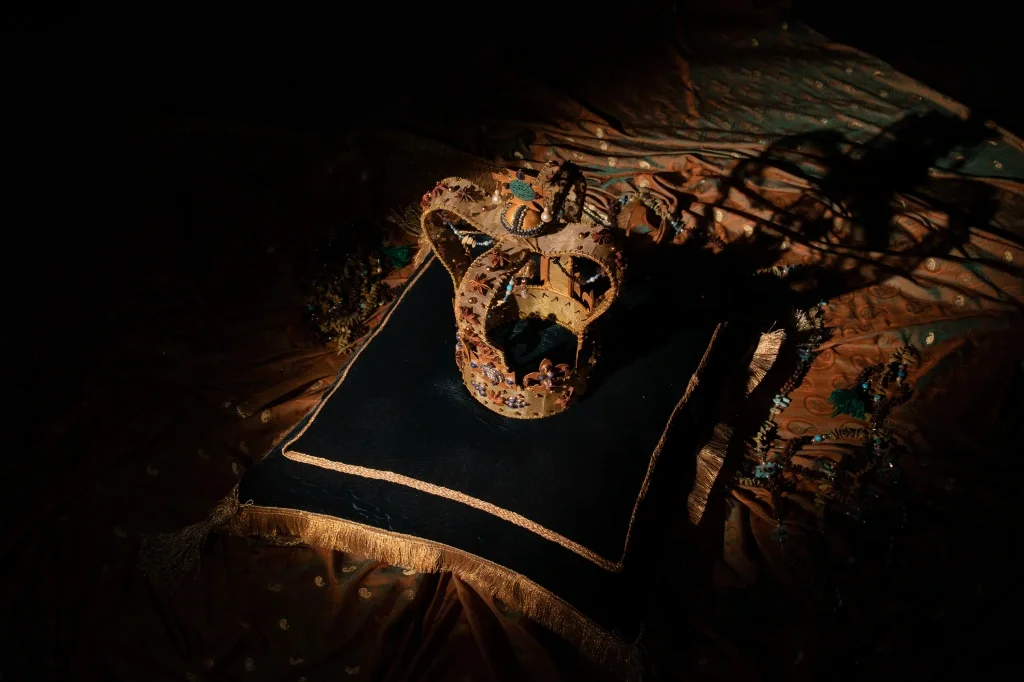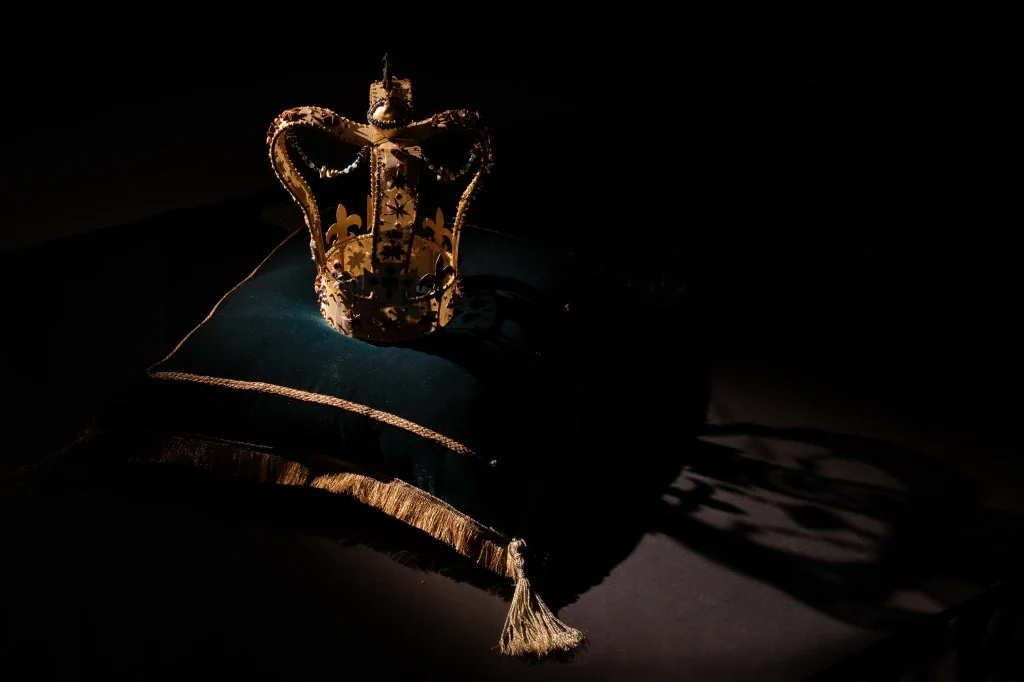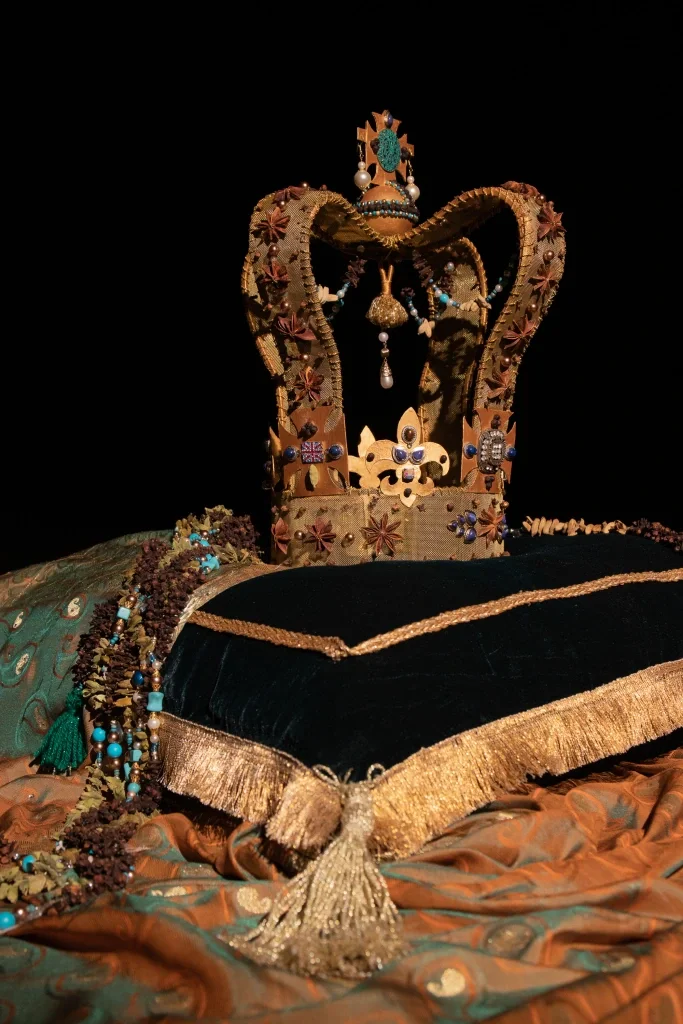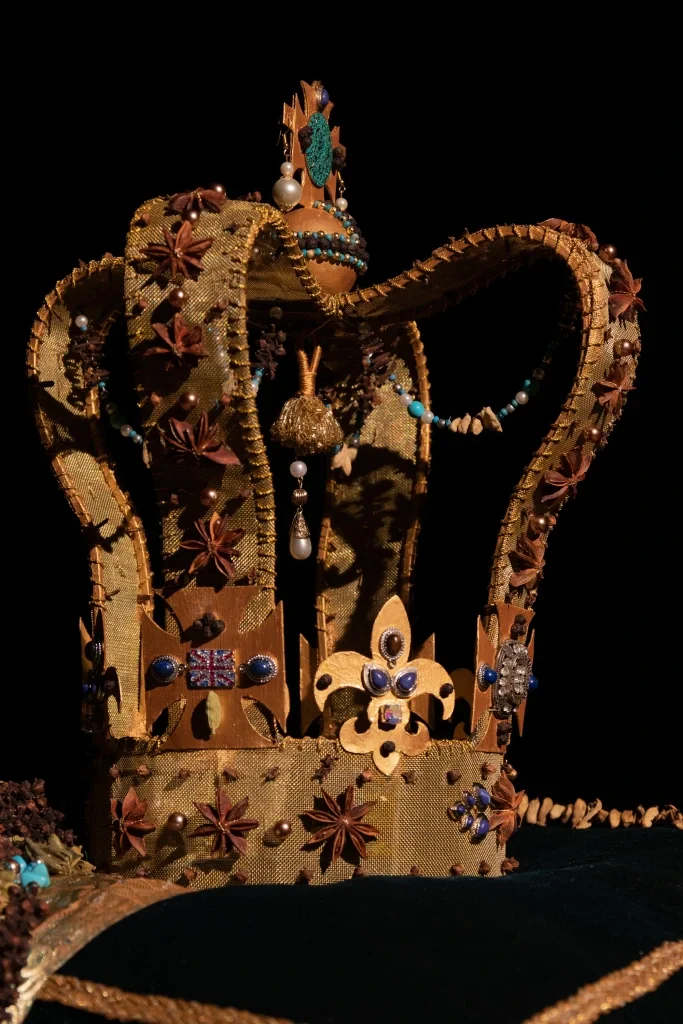“Fragrance of a Stolen Past – Aqsa Khan Nasar’s Artistic Expression Of Colonial Exploitation”
Aqsa Khan Nasar is an artist who challenges the norm through her arts. A sculptor who was born and raised in Quetta, the capital of Balochistan, Pakistan. Aqsa’s art not only visually appeals to the eyes, but also stimulates the sense of scent. The artist infuses powerful scents into her artworks, creating a unique form of art known as olfactory art. Rather than focusing simply on visual or auditory elements, this type of art expresses itself primarily through aroma or smell.
One of Aqsa’s works focuses on Pakistan and India’s colonial history, which was governed by the British. During this period in Pakistani and Indian history, Great Britain exploited the country’s riches, the most noteworthy of which was the spice trade. One of several contributing factors to strife between Pakistan and India, two countries that gained independence in 1947.
Aqsa made a crown based after the British crown and decorated it with spices. The artist’s decision is based on the British crown’s colonial history and the extraction of resources from its numerous colonies. Aqsa seeks to portray stories of Pakistan’s colonial history as part of the British colony. She also paid homage to the renowned Kohinoor diamond, which has long been associated with British colonial plunder.
Her works focus not on the diamond or the crown itself, but on the fragrant spices that graced the crown and its surroundings, indicating how colonialism is about more than just wealth and territory, but also culture, identity, and how the resources stolen are still valued today.
Aqsa’s replica of the British Crown is creative; the crown’s arch appears to be made of metal and brass, the signage and emblem also made from the same material as the crown’s arch. There are representations of the British emblem, a cross pattée at the top of the crown, and little pearls hanging down from the crown’s arches. The crown lays nicely on what appears to be a green velvet cushion. The spices are also prominently shown, embellishing the environs of the crown. The pungent aroma of spices emanating from this artwork creates a strong impression in the minds of visitors of what British colonialism represented: economic exploitation of its colonies.
If there is a way to represent British exploitation in Pakistan & India, Aqsa Khan Nasar’s work does so perfectly, both visually and through the sense of scent. These two regions of India and Pakistan have given the world so much, and without them, we would not have enjoyed the delectable food mixed with spices that we have today. This work not only helps us appreciate the scope and effects of British colonialism, but it also highlights one of Pakistan and India’s contributions to the globe.
One of the work’s highlights is a self portrait of the artist seated in front of a dark background, Aqsa can be seen, wearing a crown sculpture created by her. Her head is also covered with the same outfit she is wearing. One of her feet is gently resting on the green velvet cushion on the floor. She carried what appeared to be spices, the same ones that she had adorned the crown sculpture with. This image is not only powerful, but it also conveys a clear message that may be read in a variety of ways.
The artwork may symbolize that Great Britain’s riches are borne by other ethnicities who were once colonies of Britain, with the crown indicating wealth and the self portrait of the artist representing the British colonies. We see a crown modeled after the British crown design, but the woman wearing it is not a British woman, implying that the British wealth is mostly derived from the exploits carried out on these people’s lands and cultures.
Aqsa Khan Nasar’s artworks are nothing short of spectacular; the emotions conveyed via her works provide viewers with a sense of comprehension of British colonial history through the eyes of the oppressed. While it may be a narrative of glory for the British, it is a tale of exploitation, war, and disintegration for the Pakistanis and Indians
